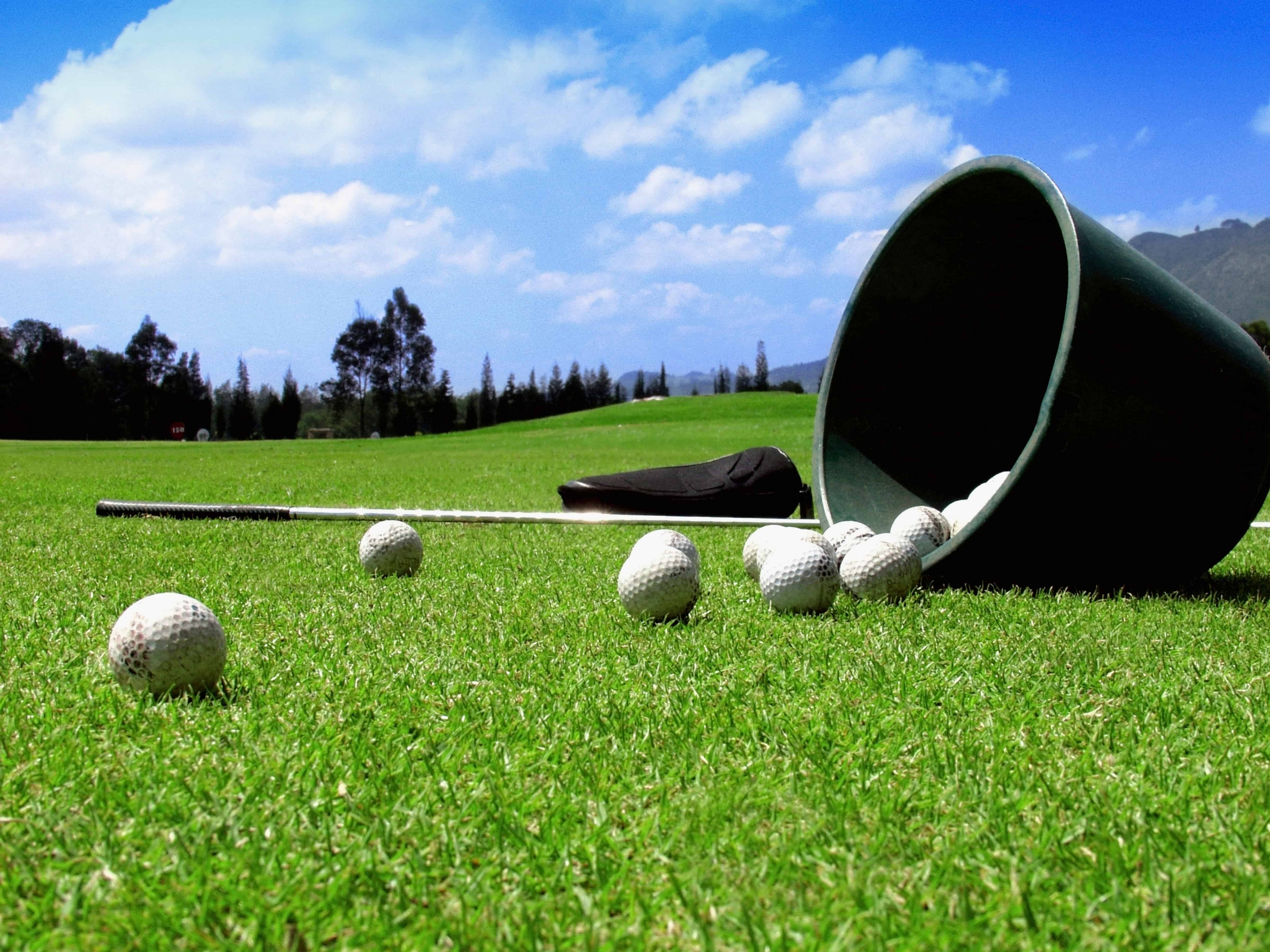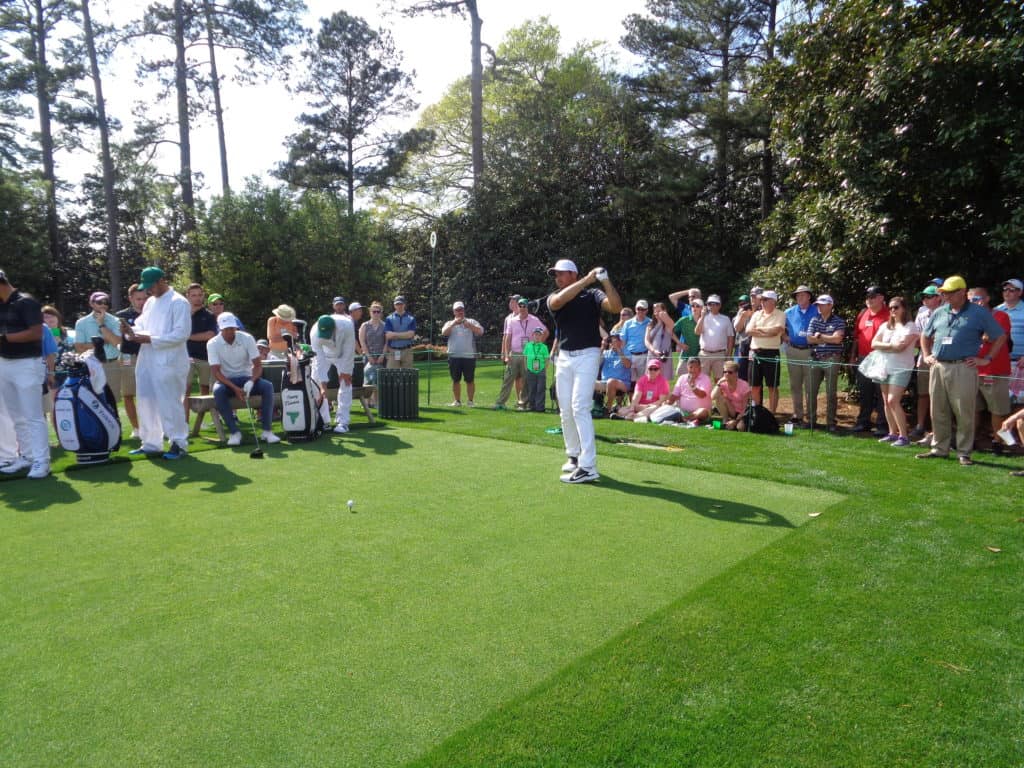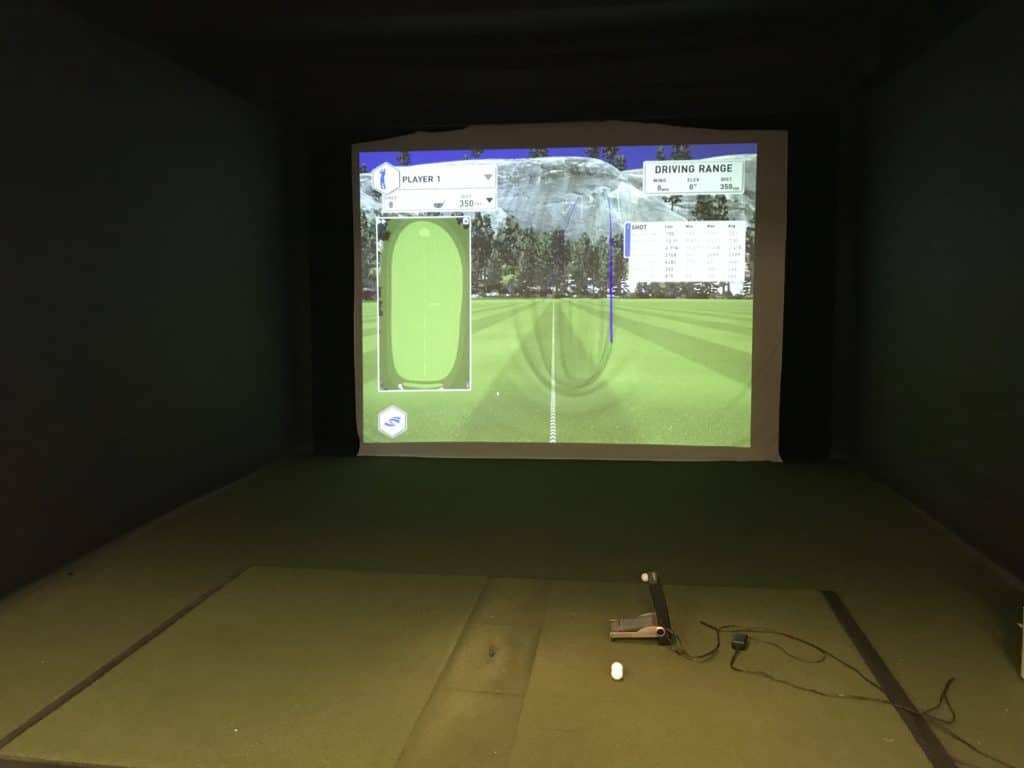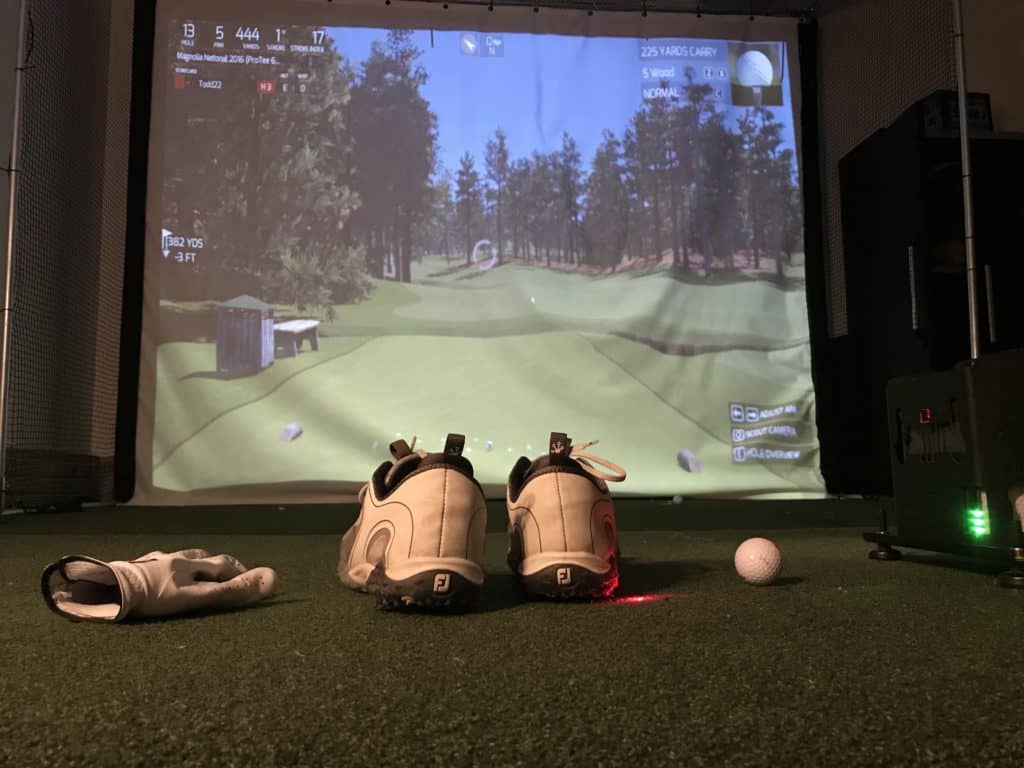The typical 3 wood is between 42 and 43 inches. Over the past decade the length of the shaft in the 3 wood has increased which allows a golfer to gain great distance with the 3 wood.
With the 14 clubs that golfers get to carry in their bag, having versatility and the right setup to help the golfer reach their full potential is essential.
Golfers have plenty of options when it comes to fairway woods, hybrids and wedges. If you look at 10 different golfers and their club setup, you might see 10 different setups.
This is a change from the past when the traditional golf bag may have had the following clubs:
- 2 iron thru 9 iron (8)
- Pitching wedge, sand wedge, lob wedge (2)
- Driver (1)
- 3 Wood (1)
- 5 Wood (1)
- Putter (1)
Now, many golfers will not carry a 2 or 3 iron which provides another option for an additional fairway wood, hybrid or wedge.
Hybrids have become highly popular especially among junior, senior, and female golfers.
Some golfers might even have 16 clubs that they have in their possession and pick which 14 clubs that are going to help them hit the shots required on a specific course for the day.
Which brings us to the 3 wood.
Golfers for years have carried a 3 wood and have used this club out of the fairway, rough and off the tee.
The 3 wood is an essential club and one that every golfer should carry. Let’s dive into some of the specifics of a 3 wood.

3 Wood Shaft Length
Amongst other fairway woods, the 3 wood is the longest fairway wood with the 5 wood and 7 wood being shorter than the 3 wood. The typical 5 wood is around 41-42 inches long and a 7 wood is 40-41 inches.
What loft is a 3 wood?
The typical loft of a 3 wood is between 13 and 18 degrees. Some golfers prefer the lower lofted 3 wood to gain some extra distance. Those with slower swing speeds my benefit with a 3 wood closer to 16-18 inches to allow for extra launch with the shot.
The other fairway woods are higher in loft. For example a 5 wood is between 18-21 degrees and a 7 wood is between 22 and 24 degrees. The extra loft and the shorter shafts reduce the distance and add some extra height to a shot.
When should I use a 3 wood?
The 3 wood is a rather versatile club and one that a golfer should feel comfortable with. There are many different situations here a driver can be used. Here are the key situations of when to use a 3 wood.
- Off the Tee: If you are a narrow par 4 or a hole with a hazard, you might consider using the 3 wood off the tee. On the shorter, narrow golf holes, sometimes placement and accuracy are more important than total distance. On some holes, especially with server tree lined holes, getting the ball in the fairway is essential. Playing from the trees all days is no fun!
- From the Fairway: Some golfers on par 5s have enough distance to possibly hit the green in two shots. The ability to hit a 5 wood far and high can help take the 4 par 5s on most courses and provide great biridie opportunities. The longer you can hit the ball the better chance of making the par 5s easier holes on the course.
- Approach Shots: For those that lack distance off the tee and find themselves needing a club that flies further than their longest iron, hitting these shots accurately with a 3 wood becomes important to shooting your best scores. Unless you have an awesome short game and can get up and down from 30 yards out or so, hitting the 3 wood is important.
- Out of the Rough: It is important to be able to advance the ball down the fairway on par 4s or par 5s even when you can reach the green. Continuing to sacrifice distance shot after shot can put undue strain on the short game.

How can I gain more distance with my 3 wood?
The number one way to increase distance with a 3 wood is to increase your swing speed. The great news is that in today’s golf industry there are some products that rely on overspeed training, which is a science based approach to increasing swing speed.
I would highly recommend the SuperSpeed System. Here is a drill/tip you can use and a brief overview of SuperSpeed Golf!
The Drill: Increase your swing speed through overspeed training
- Check out SuperSpeed Overspeed Training Protocols
- Train every other day for 10-15 minutes.
- See a 4-6% increase in swing speed as early as the first training protocol.
The number one thing that has helped me gain significant distance is the SuperSpeed Training System. This overspeed based system where you train every other day for about 10-15 minutes with different swing sticks can help you increase your swing speed by 5-8% which can be 20-30 yards. Who wouldn’t want an extra 20-30 yards. Plus it helps improve your mechanics.
SuperSpeed Golf – Use Discount Code Golfjourney365 for some savings!
The analytics are pretty clear on the importance of speed in the game of golf. Would you rather hit your approach shot from 130 yards of 160 yards? The answer is pretty simple!
We know that over the course of time, we will hit shots from 130 yards much closer than from 160 yards, whether we are an average amateur golfer, a scratch golfer, or a PGA Tour member!
The key is having shorter approach shots, so we can hit the ball closer to the hole and then make more putts! Speed is king in the game of golf! Make sure you check out SuperSpeed Golf!
How to measure what 3 wood is best for you?
There are many 3 wood options on the market. From manufacturer to the loft to the length of the club. These can be difficult decisions to make.
The game of golf is changing for the better. What was once only a dream for most amateur golfers has not become a reality and affordable. There are several quality options for your own launch monitor to help determine what club is best for your game.
You can now test in the comfort of your own home, at the driving range or even on the course with a launch monitor of your own.
Knowing key data such as club speed, ball speed, launch angle, spin rate and other key data provided by these launch monitors can be a game changer.
The professional golfers of today all have access to some great technology including launch monitors to help measure their swing and know their numbers.
Can an amateur use this same or similar technology for game improvement? Yes, absolutely and I would highly recommend it.
In today’s golf world, even amateurs can have access to amazing technology and data with the technology now available and know the distance they hit their irons and all of their clubs. This can help you map out your bag and have with pretty quality precision the distance you hit each club.
Even if you aren’t going to go all out and build an indoor golf simulator like I did (see below), you can still pick up a launch monitor at a reasonable price and use it in your indoor net or taking to the course or driving range with you!
Getting the right club setup for you whether it is a 3 wood, driver or wedge can help you shoot lower scores!
Know numbers like spin rate, ball speed, spin axis and other key information is vital to your growth. Sharing these numbers with your instructor can be helpful and help with equipment selection as well.
I would recommend one of the three launch monitors listed below:

Why do I slice my 3 wood?
A golf ball curves to the right when the club face is to the right of the swing path. It is a rather simple ball flight law that the ball will curve away from the swing path.
For example, if your club face is to the left of the target line the ball will still curve right if your swing path is even further left. Or your face could be right of the target line and if the swing path is left of the face it will start right and curve right.
So if your ball is curving to the right, your swing path is left of your club face at impact. Wherever your face is aiming, whether that is right or left at impact, your swing path is left of that. The quick fix is to get your path moving more to the right and your club face more to the left.
Understanding The Ball Flight Laws
Why? If you understand the ball flight laws you can start to become your own swing instructor and make corrections on the range or the course by reading the flight of your golf ball.
Too often golfers turn to the video of their swing when everything you need to know can be read off of your ball flight. Did you know that your ball flight can tell you the following:
- Where your club face was at impact.
- If your swing path was left or right of the club face.
Once you know these two items you can make the corrections by checking out our 2nd Tip on understanding what swing thoughts can help you get the proper matchups.
So let’s dive into the ball flight laws:
- Generally speaking, the golf ball will start where the club face is aiming.
- The golf ball will then curve away from the swing path.
There are two different lines that we must understand. The target line and the start line. The best golfers start the ball left or right of the target line and then curve the ball back towards the target.
Let’s go over some examples to help you better understand the ball flight laws.
Example A: Let’s say that the club face is 3 degrees right of the target line and the swing path is 5 degrees right of the target line. What will the ball do?
Answer: The ball will start right of the target line and draw back towards the target. This is known as a push draw.
Example B: Let’s say the club face is 3 degrees right of the target line, same as in example A, but the swing path is only 1 degree right of the target line. What will the ball do?
Answer: The ball will start to the right of the target line and will fade to the right. Keep in mind that the ball will curve away from the swing path. In this example, both the club face and the swing path are to the right and the ball will curve away from the path.
Example C: Let’s say the club face is 3 degrees to the left of the target line and the swing path is 5 degrees left of the target line. What will the ball do?
Answer: The ball will start to the left and curve to the right. This would be a pull fade or pull slice. Keep in mind that even though the face is closed to the target line, it is open to the swing path and the ball will curve away from the swing path.
Example D: Let’s say the club face is 3 degrees to the left and the swing path is only 1 degree to the left. What will the ball do?
Answer: The ball will start left and curve left. This shot would look like a pull draw.
Hopefully, these examples help you understand the club face and swing path correlation and how they match up. Once you understand these ball flight laws, it will help you read your own shots and possibly make in round adjustments.
3 Wood vs 3 Hybrid?
Have you ever wondered what the difference between the two clubs. There are many difference including shaft length, when to use and other important difference.
To check out a complete post on this topic, visit this link.
My Secret To Golf Improvement
Let’s face it, in order to get really good at golf, we must practice frequently. About three years ago, I made the leap and invested in a golf simulator build for my garage.
I went with a SkyTrak Launch Monitor and the TGC software and can now play over 100,000 courses including Augusta, Pebble Beach, Bethpage Black, Whistling Straits. St. Andrews and many other of the top 100 courses in the world.
This golf simulator setup, which is more affordable that you might imagine, has been a game changer. I can now play golf everyday of the year regardless of rain, snow, cold weather or time of day. I can practice or play rounds of golf. I can stand in the 11th fairway at Augusta and with the auto-rewind feature I am able to practice my approach shots from various differences.
It is worth checking out through Rain or Shine Golf as they offer some incredible packages along with financing offers that are difficult to beat.
Some direct links to Rain or Shine Golf for pricing and financing:

Take Action – What You Can Do Today to Get Better
What does this mean for you? I believe in the following recipe to get better:
1 – Improve your motion in the golf swing by identifying a golf instructor. Here are some options:
Here is a list of golf instructors that we have reviewed:
2 – Train to swing faster and improve your swing speed. Here are some options:
Looking to gain more Speed and Distance in your swing. Two Options:
3 – Understand course strategy and work to break through your next barrier. Here is a series on breaking through:
We have provided guides on how to break 100, 90, 80 and 70. Check out more below, if interested.
4 – Practice Frequently
Did you know that I build a golf simulator in my garage and have played over 500 rounds of golf on my SkyTrak system? It has been a game changer and one worth checking out. Here are some of my other posts on golf simulators frequently asked questions:
- Is a Golf Simulator Worth It?
- How to Build a Golf Simulator?
- What is the Best Golf Simulator?
- Golf Simulator Accessories?
- How to Build a Golf Simulator for under $7000
- Top 11 Reasons to Buy a SkyTrak
- How to Build a Golf Simulator for Under $1000
- Why Build A Golf Simulator?
- What Space is Needed?
- Can A Golf Simulator Improve My Game?
- How Much Does A Golf Simulator Cost?
- Don’t Forget to Check out our 15 best golf swings of all time.
I am an amateur golfer on a journey to get better, enjoy the game as often as possible and share my passion and knowledge with others. I have coached high school golfers at a high level and have a great passion for the game and want to give back. I enjoy learning about the golf swing and am currently studying to be a certified professional golf instructor. Join me in our journey to get better everyday. Thank you for reading!

